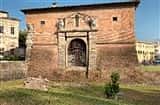Stay
Visit a locality browsing the menu on the left. In each Italy area you can then choose the best touristical structures we are proposing.
More About
Here you can find info and tips about the area you are visiting.
Most viewed in
Italy
-
The Amalfi Coast, suspended between sea and Sky, is a land of an amazing beauty. Our wish, having the pleasure to be your driver/guide, is to share with you the traditions, art, history, landscapes and the beauty that makes this land, " The Divine Amalfi...
-
Thanks to their thirty years experience and innate passion for the sea, the Coppola brothers manage the Pontile Coppola (Coppola Wharf) with professionalism, offering high quality services to all boaters who come every year to Amalfi, to admire the pearl...
-
The Marina Molo Sant'Eligio, tourist port of Taranto, is located in the heart of the city overlooking the Great Sea, on areas previously used for the mooring of vessels serving the commercial port. The property includes approx.. 250 berths, with fixed...
-
Car Service Amalfi offers a private car or minivan service with professional & high quality drivers, ideal for transfers with class in full comfort to airports, railway stations, ports and private excursions between the most beautiful towns in the region...
Print this page
Send to a friend by e-mail
The furnace of Porta San Donato
-

The structure of the furnace of Porta San Donato was, in the local area, an unique example in its genre. Characterized by a rather particular conformation, linked to a production of "fine ceramics" , although it has also been used for the production of common ceramics frequently used in the preparation of Lucca dining tables. Why was used a furnace with this conformation for the production of precious artefacts with so little demand at local level? The answer to this question is in the historical documents about the furnace and its use.
We learn from these documents that in 1643, after the creation of a new entrance to the city, the huge spaces of the old gate of San Donato, were assigned to the Genoese craftsman Giovanni Antonio Salomoni, for the creation of a pottery factory. The furnace "indirect cooking" was necessary in the production of high-level majolica. Unfortunately we do not have findings of this production. Instead we have a large amount of artefacts related to the production of the so-called «graphite» ceramic, a much more common type.
It is natural to think that the Genoese craftsman Salomoni had come to Lucca to export in our area his precious majolica, for the creation of which a proper structure was needed. Unfortunately, this product was unsuccessful in Lucca, and Salomoni was forced to choose for the production of less valuable ceramics, but very much in demand locally. The production was then changed, but the structure of the furnace remained the same, this allowed him to use a refined workmanship in the production of a more common material.